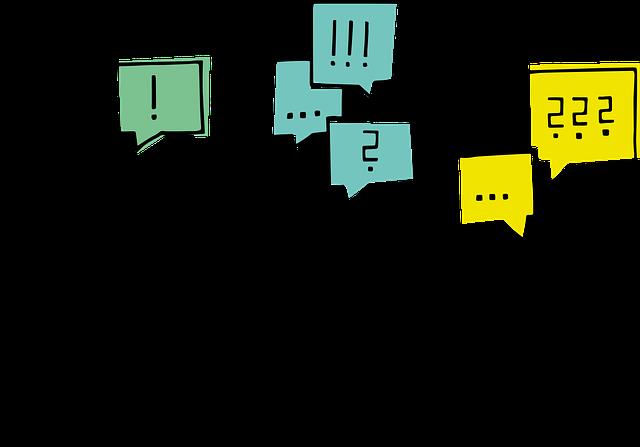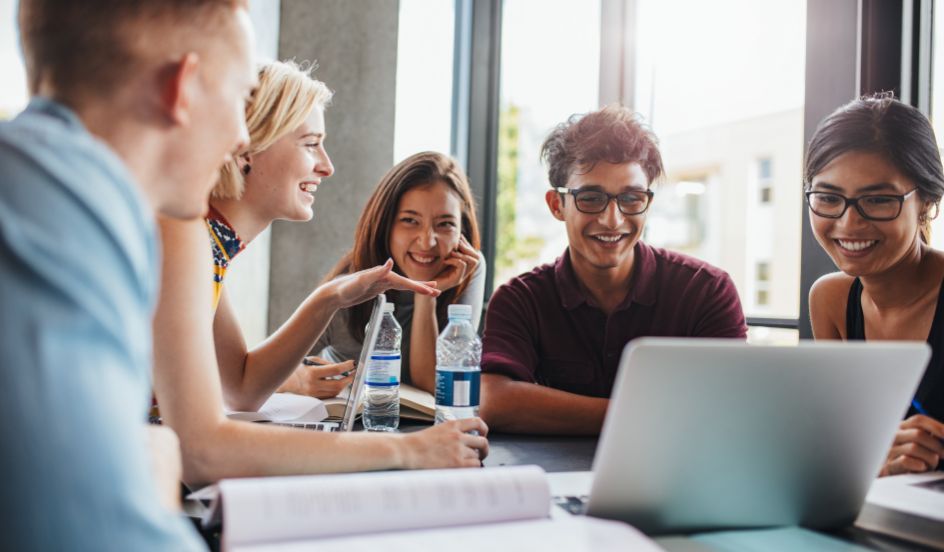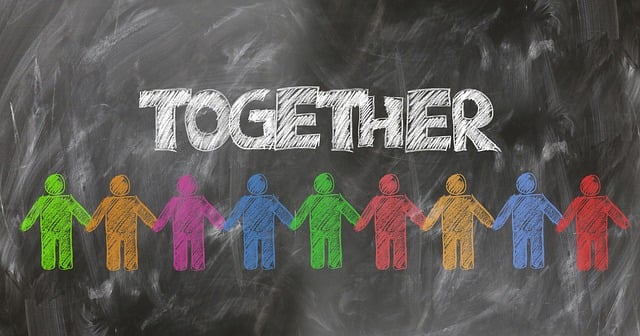
In today's rapidly evolving educational landscape, fostering a cooperative learning environment has become paramount.
This article explores the top 10 strategies that can unleash the power of learning together.
From promoting positive interdependence to encouraging reflective practice, these proven techniques aim to facilitate collaboration, accountability, and problem-solving skills among students.
By implementing these strategies, educators can nurture a dynamic and inclusive learning atmosphere, empowering students to thrive and achieve success collectively.
Positive Interdependence
Positive interdependence is a key element in fostering a cooperative learning environment, promoting collaboration and mutual reliance among learners. When students work together in a cooperative learning setting, they are interdependent on each other's efforts and contributions to achieve a common goal. This interdependence benefits both individual and group learning outcomes.
By relying on one another, students develop a sense of responsibility and accountability, as they understand that their actions and contributions directly impact the success of the group. Cooperative learning also encourages active participation and engagement, as learners understand that their input is valued and necessary for the overall success of the group.
Moreover, positive interdependence fosters a supportive and inclusive learning environment, where students learn from each other's perspectives and experiences, promoting a deeper understanding of the subject matter.

Individual Accountability
Promoting individual accountability is crucial in fostering a cooperative learning environment, as it ensures that each student actively contributes to the group's success. By emphasizing individual responsibility, students are encouraged to take ownership of their learning and actively participate in group activities. This not only enhances their personal growth but also promotes a sense of autonomy and independence.
To foster individual accountability, educators can implement the following strategies:
- Clearly define individual roles and responsibilities within the group.
- Set clear expectations for each student's contribution to the group's goals.
- Provide regular opportunities for self-reflection and self-assessment.
- Encourage students to hold each other accountable through peer evaluations.
Promotive interaction is a key aspect of fostering a cooperative learning environment.
It involves creating opportunities for students to actively engage with one another, share ideas, and provide support.
Group Work Benefits
Collaborative learning experiences offer numerous advantages through the promotion of interactive and synergistic engagement among group members. When students work together in groups, they benefit from the following:
- Enhanced learning: Group work allows students to learn from each other's perspectives and experiences, leading to a deeper understanding of the subject matter.
- Improved critical thinking skills: Through group discussions and debates, students are challenged to think critically and analyze different viewpoints, helping them develop their own ideas and opinions.
- Increased motivation: Working in a group fosters a sense of accountability and responsibility, motivating students to actively participate and contribute to the group's success.
- Enhanced social skills: Group work provides an opportunity for students to develop their communication, collaboration, and teamwork skills, which are essential in today's interconnected world.
Group work benefits can be maximized by fostering active student collaboration and promoting interaction among group members. Creating a collaborative learning environment not only enhances student engagement but also cultivates problem-solving strategies. Encouraging students to work together allows them to pool their knowledge, skills, and perspectives, resulting in more comprehensive and creative solutions to problems.
To promote student collaboration, educators can implement various strategies. For instance, assigning group projects that require students to work together effectively, setting clear expectations for teamwork and communication, and providing opportunities for peer feedback and reflection. Additionally, creating a supportive and inclusive classroom culture where all students feel valued and heard can further enhance student collaboration.

Appropriate Use of Social Skills
The effective use of proper social skills is essential in creating a cooperative learning environment. When students understand and practice appropriate social skills, they are more likely to engage with their peers in a positive and respectful manner, leading to improved collaboration and a deeper understanding of the subject matter.
Here are some key points to consider when promoting the appropriate use of social skills in the classroom:
- Active Listening: Encourage students to listen attentively to their peers, showing genuine interest in what they have to say.
- Effective Communication: Teach students how to express their thoughts and ideas clearly and respectfully, promoting open and constructive dialogue.
- Empathy and Understanding: Foster an environment of empathy and understanding, where students are encouraged to consider different perspectives and show respect for diverse opinions.
- Conflict Resolution: Provide students with strategies to resolve conflicts peacefully and respectfully, helping them develop problem-solving skills.
Group Processing
Group processing is a crucial aspect of fostering a cooperative learning environment. It involves reflecting on the progress made, providing feedback for improvement, and setting goals together as a group.
This process allows learners to evaluate their performance, identify areas for growth, and collaborate on strategies to enhance their learning experience.
Reflection on Progress
Effective reflection on progress is essential for fostering a cooperative learning environment. It allows students to assess their own understanding, identify areas for improvement, and set goals for future learning. Here are four assessment strategies that can be used to facilitate progress reflection:
- Self-assessment: Encourage students to reflect on their own performance and identify strengths and weaknesses. This helps them take ownership of their learning and develop self-awareness.
- Peer assessment: Provide opportunities for students to give and receive feedback from their peers. This promotes collaboration, critical thinking, and the development of communication skills.
- Teacher feedback: Regularly provide constructive feedback to students, highlighting their achievements and offering suggestions for improvement. This helps students understand their progress and guides them towards further growth.
- Goal setting: Involve students in setting individual and group goals based on their reflections. This empowers them to take responsibility for their learning and motivates them to strive for continuous improvement.
Feedback for Improvement
One effective way to foster improvement in a cooperative learning environment is by providing feedback through group processing.
Peer evaluation and self-assessment are key components of this feedback process. Peer evaluation allows students to provide constructive feedback to their peers, highlighting areas of improvement and offering suggestions for growth.

This not only enhances the learning experience for the student being evaluated but also promotes a sense of responsibility and accountability within the group.
Self-assessment, on the other hand, encourages students to reflect on their own performance, identify strengths and weaknesses, and set goals for improvement.
Goal Setting Together
By incorporating goal setting together as part of the group processing stage, students can actively contribute to their own growth and development in a cooperative learning environment. Collaborative planning and shared decision making are essential components of this process.
When students collectively set goals, they have a sense of ownership and responsibility towards achieving those goals. This fosters a sense of autonomy and freedom within the learning environment. Goal setting together also promotes open communication and encourages students to support one another in their individual and group aspirations.
Moreover, it allows students to develop critical thinking and problem-solving skills as they work together to establish realistic and achievable objectives. By engaging in collaborative goal setting, students become active participants in their learning journey, making it more meaningful and empowering for them.
Clear Learning Goals
Clear learning goals are essential for creating a focused and purposeful cooperative learning environment. When students have a clear understanding of what they are expected to learn, it promotes a sense of direction and motivation.
Clear communication between the teacher and students is crucial in establishing these learning goals. The teacher should provide effective instruction that clearly outlines the objectives and expectations for the students. This ensures that everyone is on the same page and working towards a common goal.

Additionally, clear learning goals help students to monitor their progress and take ownership of their learning. They can track their achievements and identify areas that require further attention.
Structured Roles
Structured roles in a cooperative learning environment offer numerous benefits.
Firstly, role allocation allows students to develop a sense of responsibility and ownership over their assigned tasks, leading to increased motivation and engagement.
Secondly, by assigning specific roles, collaboration among students is enhanced as they learn to work together and leverage each other's strengths.
Ultimately, structured roles create a structured framework that promotes active participation and fosters a cooperative learning environment.
Role Allocation Benefits
One key benefit of role allocation in fostering a cooperative learning environment is the enhanced organization and productivity that it brings. When students are assigned specific roles within a group, it helps to distribute responsibilities and ensures that everyone has a clear purpose and task to focus on. This structured approach not only reduces the chances of confusion and overlapping efforts but also leads to increased engagement and participation from all group members.
- Improved Collaboration: By assigning specific roles, students are encouraged to work together and collaborate effectively, pooling their strengths and resources to achieve a common goal.
- Enhanced Accountability: Clearly defined roles make it easier to hold individuals accountable for their contributions, ensuring that everyone is actively involved and responsible for their own learning.
- Increased Confidence: Allocating roles helps students develop confidence in their abilities as they gain expertise in their assigned tasks and contribute meaningfully to the group's efforts.
- Opportunity for Leadership Development: Role allocation provides students with the chance to take on leadership roles, allowing them to develop important skills such as communication, decision-making, and problem-solving.
Enhancing Collaboration Through Roles
The utilization of structured roles enhances collaboration within a cooperative learning environment. By assigning specific roles to each member of a group, communication is enhanced as individuals are given clear responsibilities and tasks to fulfill. This not only ensures that everyone contributes to the team's objectives but also fosters teamwork and a sense of collective responsibility.

Structured roles help to distribute the workload evenly and maximize the diverse skills and expertise of each team member. For example, a group may have a leader who facilitates discussions and decision-making, a timekeeper who ensures that the group stays on track and meets deadlines, a recorder who documents ideas and outcomes, and a mediator who resolves conflicts.
These roles not only enhance communication but also promote a collaborative and cooperative learning environment where individuals can thrive and succeed together.
Impact on Student Engagement
Assigning specific roles to students in a cooperative learning environment has a significant impact on student engagement. When students have designated roles, it increases their motivation and encourages active participation. Here are four ways in which structured roles can positively influence student engagement:
- Increased responsibility: Giving students specific responsibilities within their group fosters a sense of ownership and accountability. This motivates them to actively contribute to the group's success.
- Enhanced collaboration: Assigning roles such as facilitator, recorder, or timekeeper encourages students to work together and rely on each other's strengths. This collaborative approach fosters engagement and promotes a sense of teamwork.
- Improved communication skills: Certain roles, such as spokesperson or mediator, require students to effectively communicate their ideas and collaborate with others. This helps develop their communication skills and encourages active participation.
- Equal participation: Structured roles ensure that every student has a defined task and responsibility, preventing some from becoming passive observers. This promotes equal participation and engagement among all group members.
Collaborative Problem-Solving
Collaborative problem-solving is a highly effective method that allows individuals to work together, utilizing their collective knowledge and skills to find solutions to complex issues. This approach involves group work and offers several benefits.
First, it promotes the exchange of ideas and perspectives, as individuals bring different experiences and expertise to the table. This diversity of thought leads to a broader understanding of the problem and more innovative solutions.
Second, collaborative problem-solving fosters communication and interpersonal skills, as individuals must effectively communicate their ideas, actively listen to others, and navigate conflicts constructively.
Third, it enhances critical thinking and problem-solving skills, as individuals engage in discussions, analyze different viewpoints, and evaluate potential solutions.

Reflective Practice
Reflective practice plays a pivotal role in fostering a cooperative learning environment. It encourages individuals to introspect and analyze their experiences, facilitating personal growth and improving future problem-solving abilities. When individuals engage in reflective practice, they gain a deeper understanding of their own thoughts, feelings, and actions. This allows them to make more informed decisions and approach collaboration with a heightened sense of self-awareness.
By reflecting on their own experiences, individuals can identify areas of improvement, recognize their strengths, and develop strategies for enhancing collaboration. Reflective practice also promotes active listening and empathy. As individuals become more attuned to the perspectives and needs of others, they are better able to contribute to a harmonious and effective cooperative learning environment.
Ultimately, reflective practice empowers individuals to continuously learn and grow. It contributes to a cooperative learning environment where personal growth and development are valued. Through self-reflection and introspection, individuals can enhance their problem-solving abilities, actively listen to others, and empathize with their peers. By encouraging reflective practice, a cooperative learning environment becomes more harmonious and effective.
Teacher Facilitation
Building on the importance of reflective practice, effective teacher facilitation is crucial in fostering a cooperative learning environment by guiding and directing the collaborative efforts of students. Teacher guidance plays a vital role in creating an atmosphere where students feel empowered to interact with one another and take ownership of their learning. By providing clear instructions, setting expectations, and offering support, teachers can facilitate meaningful student interaction and engagement.
Teachers can foster a cooperative learning environment by structuring activities that promote collaboration and teamwork. For example, assigning group projects or implementing cooperative learning strategies encourages students to work together, share ideas, and learn from one another. Additionally, teachers can facilitate discussions and provide opportunities for students to actively participate and contribute to the learning process.
Frequently Asked Questions
How Can Positive Interdependence Be Established in a Cooperative Learning Environment?
Positive interdependence can be established in a cooperative learning environment by focusing on establishing trust and building teamwork among the participants. This can be done through clear communication, fostering a sense of shared goals, and promoting collaboration.
What Strategies Can Be Used to Ensure Individual Accountability in a Group Setting?
To ensure individual accountability in a group setting, strategies can be implemented that emphasize individual responsibility and group accountability. These strategies can include establishing clear roles and expectations, implementing peer evaluation, and providing regular feedback and assessment.

Promoting collaboration and facilitating teamwork among students is crucial in fostering a cooperative learning environment. By encouraging open communication, group discussions, and assigning group projects, students can engage in promotive interaction, enhancing their learning experience.
What Are Some Examples of Social Skills That Can Be Effectively Utilized in a Cooperative Learning Environment?
Examples of social skills that can be effectively utilized in a cooperative learning environment include active listening, effective communication, collaboration, empathy, and conflict resolution. These skills benefit students by promoting better understanding, teamwork, and a positive classroom atmosphere.
How Can Group Processing Be Effectively Integrated Into a Cooperative Learning Setting to Enhance Learning Outcomes?
Group processing can effectively enhance learning outcomes in a cooperative learning setting by providing opportunities for group reflection and collaborative problem solving. This allows students to critically analyze their experiences and develop deeper understanding and skills.
 Family Craft ProjectsHome ImprovementCooking and BakingReuse and RecycleDIY GiftsEco-Friendly ProjectsDIY Home SolutionsSeasonal ActivitiesFun and GamesLearn TogetherPrivacy PolicyTerms And Conditions
Family Craft ProjectsHome ImprovementCooking and BakingReuse and RecycleDIY GiftsEco-Friendly ProjectsDIY Home SolutionsSeasonal ActivitiesFun and GamesLearn TogetherPrivacy PolicyTerms And Conditions
